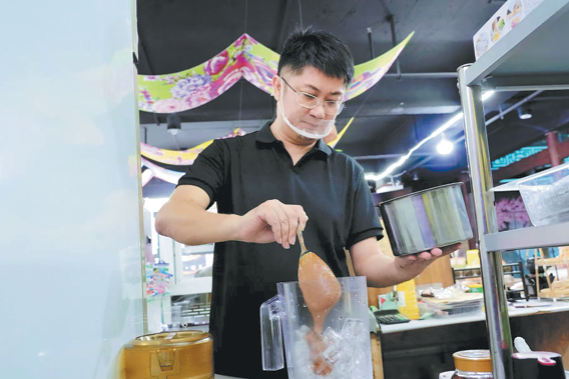Online diagnosis brings top-notch treatment to remote areas

WUHAN — Last month, Qin Qicheng suddenly felt something wrong with his chest.
He went to the nearest healthcare center for an electrocardiographic examination. The test results were sent to a higher-level hospital, where a doctor promptly reviewed his situation and gave a diagnosis within minutes.
Qin, a 72-year-old resident of Jiangxia district on the outskirts of Wuhan, capital of Hubei province, was diagnosed with acute anterior myocardial infarction. The higher-level hospital wasted no time in responding to the situation.
Just two minutes after receiving the results, the hospital instructed the healthcare center to fast-track Qin, and dispatched an ambulance to bring him in for coronary artery bypass surgery.
From the moment Qin first felt uncomfortable to his arrival at the hospital for surgery, only an hour and a half had elapsed.
China has made significant strides toward improving medical services and has transferred more resources to grassroots health institutions in the past few years, including advanced medical facilities. This has resulted in more equitable access to medical services for the general public.
However, grassroots health institutions in the vast suburban and rural areas, especially those in more remote regions, still face challenges such as a shortage of radiologists and cardiac electrophysiologists, limitations that restrict their diagnostic capabilities.
Thanks to the rapid development of internet technology, many large medical hospitals in Wuhan now offer remote medical services, bringing advanced diagnostic techniques to grassroots healthcare institutions.
An increasing number of suburban and rural residents have benefited from the approach. They can now get examinations and basic treatment at nearby grassroots health institutions and obtain authoritative diagnoses from higher-level hospitals through remote diagnosis.
"The service is given free of charge with the aim of providing easier and more convenient medical services," said Zhang Chunhong, an official at the Jiangxia district health bureau.
A diagnosis made by experts from higher-level hospitals can increase a patient's confidence, and is also a means of extending quality medical resources to primary level health institutions, Zhang added.
Taking traditional Chinese medicine in Jiangxia district as an example, some 320,000 Digital Radiography and Computed Tomography images have been remotely reviewed since the hospital launched remote image diagnosis in December 2016.
In 2021, a remote medical center was established by 20 medical institutions in Wuhan and provided 200,000 medical services last year, according to the municipal health commission.
Xinhua
- Winter harvest keeps markets supplied in Linze, Gansu
- Wanfenglin's karst peaks wear ethereal winter veil in Guizhou
- Spokesperson reiterates resolute opposition to foreign interference in Taiwan question
- Innovation sustains Beijing's winter crayfish palate
- Chinese research named among Physics World's top 10 breakthroughs of 2025
- Taiwan's ban of mainland social media app a case of political manipulation: spokesperson





































